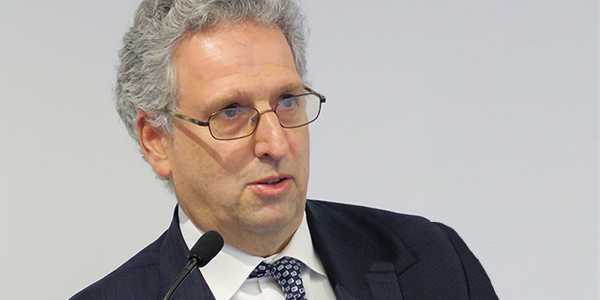FERC on Thursday left MISO transmission owners’ ability to self-fund network upgrades intact over a protest from the American Wind Energy Association and the dissent of Commissioner Richard Glick (EL15-68-005, et al.).
MISO in August 2018 reinstated TOs’ rights to self-fund network upgrades necessary for new generation. That meant generator interconnection agreements signed between June 24, 2015, and Aug. 31, 2018, could be revised to allow TOs to fund network upgrades and bill interconnection customers. (See MISO Gauging Aftershocks of TO Self-fund Order.)
The change came after the D.C. Circuit Court of Appeals remanded FERC’s 2015 decision barring TOs from electing to provide initial funding for network upgrades.
AWEA argued that the commission’s ultimate decision is “patently discriminatory” because it will allow those who had never applied for the self-fund option to do so and treat different interconnection customers differently. The association pointed out that before mid-2015, only one MISO TO has ever opted to self-fund a network upgrade.
FERC disagreed with the claims of discriminatory treatment.
“The fact that transmission owners may not have elected transmission owner initial funding in GIAs they were a party to prior to the interim period … does not, by itself, support a finding that such transmission owners should be barred from electing transmission owner initial funding on an ongoing basis,” FERC wrote.
AWEA also argued that FERC strayed from its usual mode of “preserving the sanctity of contracts.” It said the commission “has previously only departed from that precedent in extreme circumstances, such as fundamental industry restructuring and reorganization of a bankrupt utility.” The association contended that TOs shouldn’t be allowed to self-fund upgrades under multiparty facilities construction agreements because MISO’s original compliance filing didn’t mention such agreements.
FERC disagreed, noting that prior orders found that MISO’s facilities construction agreements and multiparty facilities construction agreements should be treated like GIAs.
Glick said the commission’s order didn’t “meaningfully” address AWEA’s concerns about the possible discrimination of some interconnection customers.
“Today’s order … doubles down on the unwise decision to permit the reopening of numerous previously negotiated interconnection agreements, despite considerable evidence that allowing transmission owners and affected-system operators to retroactively elect to self-fund the network upgrades associated with those agreements will result in substantial harm to interconnection customers and could lead to project terminations,” he wrote.
AWEA also argued that resource owners may have already started depreciating network upgrade investments in their books. FERC said that since 2015, generation owners have been put on notice that TO self-funding could again become a possibility.
Glick said that FERC stumbled by simply reversing its 2015 decision after the D.C. Circuit’s remand. He pointed out that the commission five years ago found that allowing TOs to unilaterally elect to fund upgrades could deny interconnection customers the “opportunity to finance network upgrades with more favorable rates and terms.”
He also said FERC’s decision to treat GIAs, facilities construction agreements and multiparty facilities construction agreements similarly was done without “any additional analysis or meaningful response to arguments raised by protesters.”





